Introduction
We made our ecobottle to see if we could create an ecosystem that works. In our case, it didn't quite work, but we did learn a few things about ecosystems and the world in general. It was fun, if a little disappointing that our ecobottle didn't come out well. You can see what our bottle looked like below as well as see things we did such as observations and our Timeline of Deaths which displays the dates that organisms in our ecobottle died. There are also some other pictures showing various diagrams and parts of our ecobottle.
Procedure
- Set up bottles.
- Put in soil, sand, rocks, & other abiotic objects.
- Put in plant seeds and animals for terrestrial section.
- Put in fruit and animals for decomposition section. Our decomposition section is shown below.
- Put in water for aquatic section. Our aquatic section is shown below.
- Put in plants and animals for the aquatic section.
- Add any extra objects.
- Seal up eco-bottle.
- Water when needed.
Observations
These are some examples of the observations we did during the ecobottle project to help us understand what was happening in the mini-biospheres.
Observation 1
Date: 9/29/05
Time: 2:00
General Impression: It is doing well, just leaking because the water is above the high water line. All animals seem to be fine.
Terrestrial: The lettuce is rotting. The snail and cricket are alive. There are roots growing. The large cricket is dead.
Decomposition: The mealworms are fine.
Aquatic: Water level is too high and leaking. The snails are eating the elodea and the guppies are fine.
Observation 2
Date: 9/30/05
Time: 12:58
General Impressions: There is condensation in the aquatic section and a little in the decomposition section. It is leaking.
Terrestrial: There is one live snail, one live cricket, and some rotting lettuce. There are no signs of bean sprouts and basil above the surface.
Decomposition: One live mealworm. We can't see the other mealworm.
Aquatic: The elodea is alive and sprouting roots. the guppies are fine and so are the snails.
Observation 3
Date: 10/3/05
Time: 1:55
General Impressions: Everything (except the cricket, mold and elodea and maybe the plants.) is DEAD!
Terrestrial: The snail, large cricket and lettuce are dead and have rotted away. One live cricket and some roots.
Decomposition: One dead mealworm and no signs of the other one. Lots of mold.
Aquatic: One live elodea. There are three dead snails, two dead adult guppies and 3 dead baby guppies (Where did they come from?)
Observation 4
Date: 10/4/05
Time: 2:03
General Impressions: Everything is still dead. Lots of condensation. I don't fell like smelling it. Some things came back from the dead.
Terrestrial: One dead snail and two dead crickets. There are a few roots.
Decomposition: Two dead mealworms, lots of white hairy mold, some green lichen looking mold.
Aquatic: Two dead adult guppies, one dead snail, 7 dead baby guppies, 2 live snails and one live elodea.
Observation 5
Date: 10/6/05
Time: 1:43
General Impressions: The water is icky. Things are rotting. It is disgusting.
Terrestrial: Everything is dead. A few plant roots yet.
Decomposition: Mold is taking over. White fluffy mold and weird green mold.
Aquatic: Gross water. Elodea and one snail are still alive. Everything is dead. We have a hypothesis on how the baby guppies appeared. We think the guppies were pregnant when they died. Then the baby guppies hatched and died because of no food and overcrowding which caused the adults' abdomens to burst. Then the dead baby guppies floated out over the next few days.
Observation 6
Date: 10/10/05
Time: 1:40
General Observations: Everything is still dead. Lots of condensation.
Terrestrial: Everything is dead. There is a blade of grass growing!
Decomposition: Lots of mold. It is really taking over.
Aquatic: Everything except the elodea is dead. There are algae growing on the sand.
Observation 7
Date: 10/11/05
Time: 2:02
General Impressions: A living thing! A blade of grass YAY!
Terrestrial: One blade of grass!!!!! Everything else is dead...
Decomposition: Only mold, and then some more mold.
Aquatic: Gross water. There is some eldoea and ALGAE!!!!
Observation 8
Date: 10/17/05
Time: 12:07
General Impressions: A NEW alive thing! The plants are finally growing!
Terrestrial: Now there are two blades of grass. And a fruit fly! How did it get here?
Decomposition: There is a lot of white mold.
Aquatic: The elodea is still alive.
Observation 9
Date: 10/21/05
Time: 12:48
General Impressions: There is lots of humidity. There are algae growing now.
Terrestrial: No more grass and the snail has disappeared.
Decomposition: There is lots of mold. The mealworm body still hasn't started decomposing.
Aquatic: I can't see anything anymore in the water. The sand is green.
Death Timeline
- 9/30/05 - One mealworm dies.
- 10/3/05 - One snail, one cricket, one mealworm, three aquatic snails and two guppies die. We also find three dead baby guppies.
- 10/4/05 - One cricket dies. We find a lot more dead baby guppies.
- 10/17/05- One fruit fly dies.
In the graphic below, there is a Venn diagram with our ecobottle being compared to the Rolling Thunder's (another group) ecobottle.
Conclusion
My group learned that an ecosystem is a hard thing to control and keep alive. This made us realize that the Earth is a very rare instance where life has managed to live without dying out quickly. If we were going to do another ecobottle project, we would probably be very careful when it comes to water, since we believe that was one of the major causes of our creatures' extinction. We might research how water can affect an ecosystem and also how to keep creatures alive since we didn't really know what some of our animals ate. So although our project failed, we still learned a lot.
Information on the Internet
- Annenberg Media: Bottle Biology The Bottle Biology site is a great place to learn about how to make ecocolumns.
- Wisconsin Fast Plants The Fast Plants site provides a wealth of information on how to use special types of plants for ecobottle investigations.


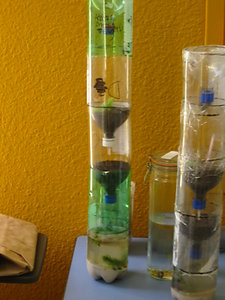
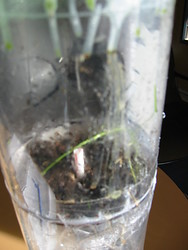
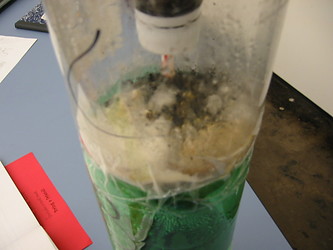
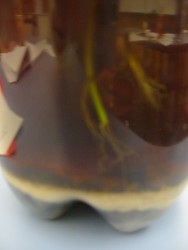
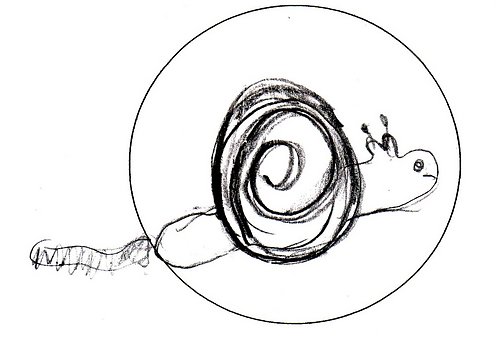
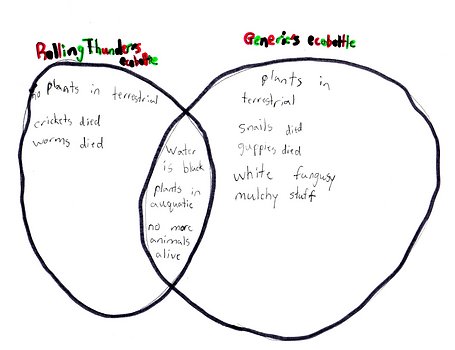

 Go to quick links
Go to quick search
Go to navigation for this section of the ToL site
Go to detailed links for the ToL site
Go to quick links
Go to quick search
Go to navigation for this section of the ToL site
Go to detailed links for the ToL site